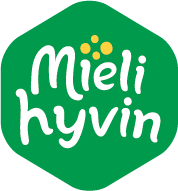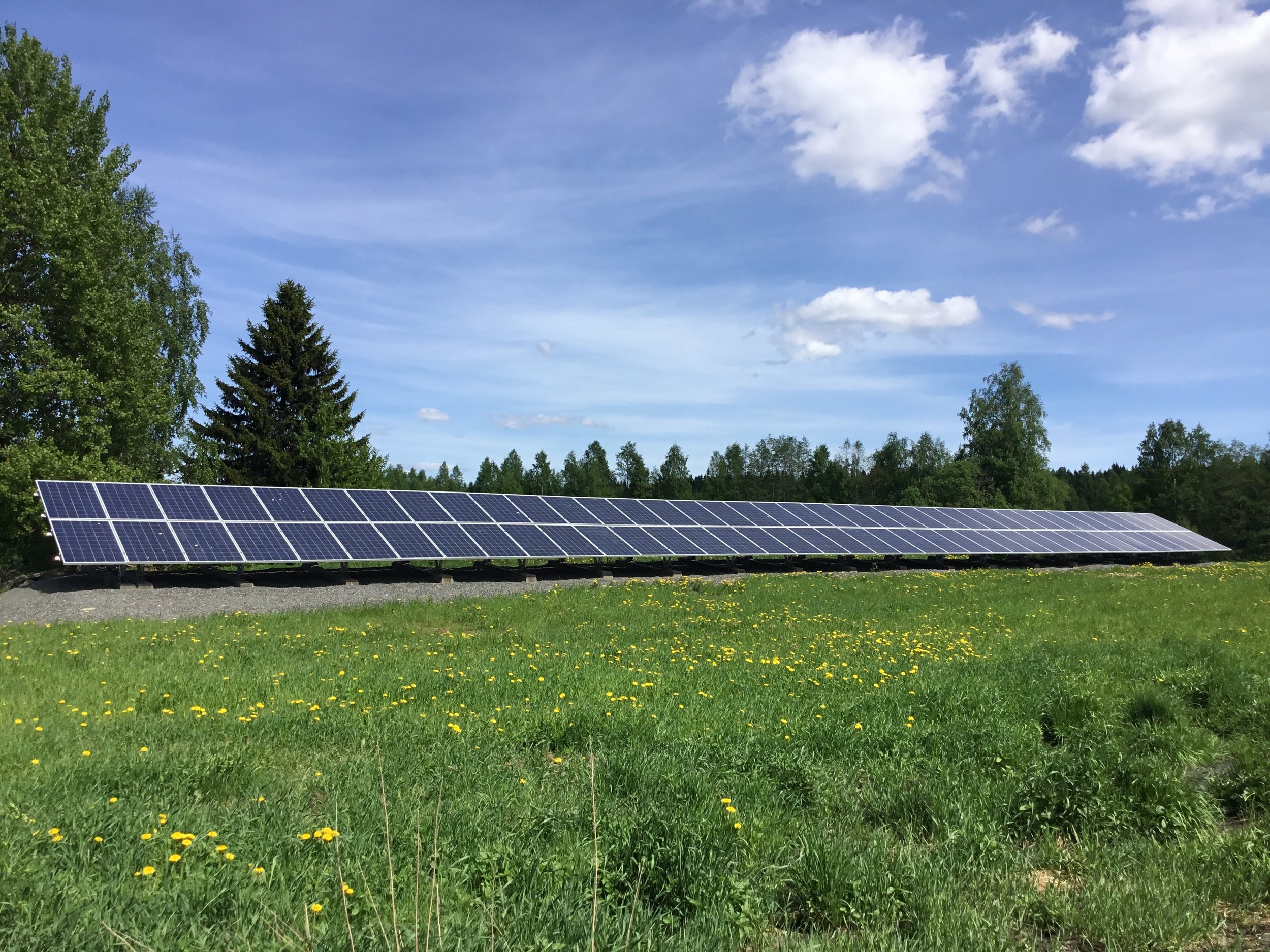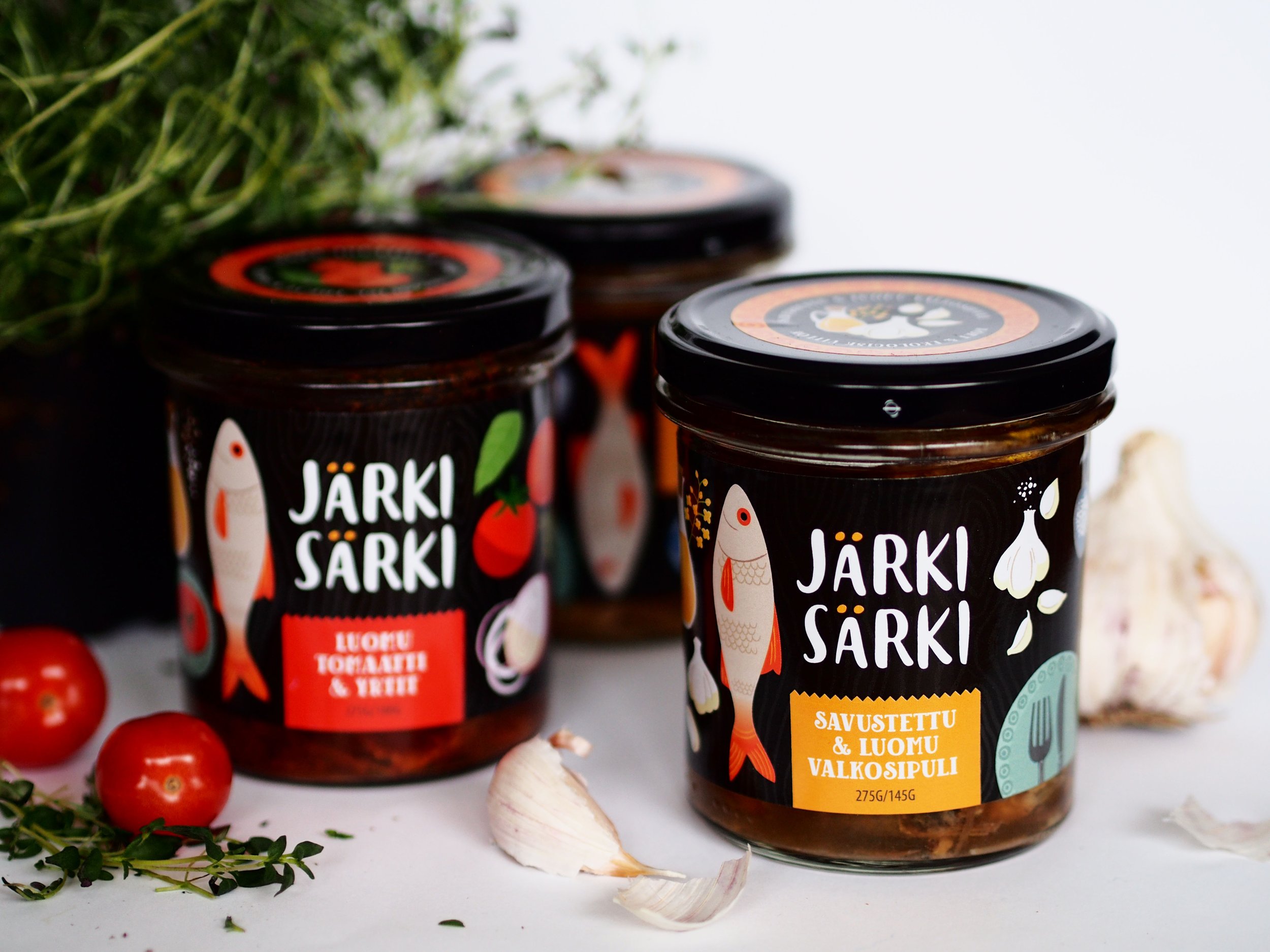

About us
Mielihyvin Honey is produced in Korpilahti, Jyväskylä, where we have a food company with a farm background. In addition to organic honey, we make canned Järki Särki fish and grow garlic and rhubarb on our organic fields.
35 years with bees
In 1984, Marja studied at an agricultural school and one autumn day the class visited a beehive. It sparked a spark that inspired her to go to for a beginners beekeeping course. Marja ended up buying her own beehive in the spring of 1986 and her boyfriend Ari was on the hive search trip. Pretty soon he was passionate about the hobby as well and a joint journey with the bees began.
In addition to his own beekeeping, Ari has had a long career as a beekeeping advisor and has had a significant impact on the development of beekeeping in Finland. Ari and Marja have also been involved in many development cooperation projects in Madagascar, Somalia, India and Nicaragua, among others.
Our team
We are lucky to have long-term employees who are committed to their work. From year to year, the same seasonal workers come to work on our farm and permanent employees already have a long career behind us in our company. During the summer, we also have trainees from all over Europe and international volunteers.
Hive locations
The bees collect nectar from the flowers within a radius of about three kilometers from their hive. We usually keep about eight beehives in one apiary so that there are enough flowers for all the bees. Our beehives are located in a large area in Korpilahti, Jyväskylä, and in neighboring municipalities. Some of our apiaries are located in Renko and Lope, Kanta-Häme, and there are also some in Lohja and Nastola. So the apiaries are not only on our own farm but in a large area on the lands of several different landowners.
Today, we get a lot of contact from home gardeners who provide us with shelter places. Awareness of the value of bee pollination has increased and many want to ensure good berry and fruit yields in their home gardens and berry sites in nearby forests.
Mielihyvin Honey is centrifuged with solar electricity
Responsible thinking and acting accordingly is important to us. In energy solutions, we have ended up using green electricity and in addition we have built our own solar power plant. Mielihyvin Honey is centrifuged by the sun.
The organic farm also produces canned
Järki Särki fish products
For a long time, we focused solely on beekeeping, but because fishing has always been part of our lives, we ended up making Järki Särki products from underutilised Finnish fish Särki. Because the Särki is very tasty fish and there has been a lot of sense in the job, the fish side has grown more than we guessed. We have managed to fit beekeeping and fish work together because the work peaks are at different times of the year. The fishing season takes place during the cold water and the bees are cared for during the summer season.
The organic farm grows apple trees,
rhubarb and garlic
The year of the bee
The beekeeping season begins in the spring in April, when we check the condition of the beehives and food supplies after the winter and at the same time clean the bottoms of the hives.
In the summer, we visit each beehive about every nine days. As the colony grows, we give bees more space by adding boxes on top of the hive. Every time we also observe the bees swarming intentions. If we see that the bees are going to swarm, we will curb their desire to escape by dividing the nest into two parts, just as the bees want.
We try to prevent the damage caused by bears by fencing the apiaries with electric fences. Usually the bears respect the electric fence, but as smart animals, they also come up with tricks for passing the fence.
In midsummer, we raise new queens, which we also sell to other beekeepers.
At the end of July, the harvest of honey and the extracting of honey begin.
In August, after the harvest, we start preparing the hives for the winter and give them food made from organic sugar as a supplement to make sure they survive the long winter season. Winter preparations will last until November. Finally, we put nets in the flying entrance of the hives that prevent small rodents from entering the hive during the winter.
In the heart of winter, we pack and market honey, and in the spring and winter, we are already preparing for next summer by building and renovating equipment.
In April, the annual cycle will start again.







